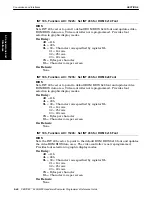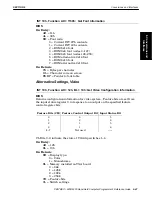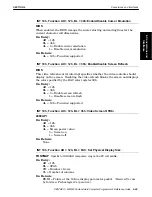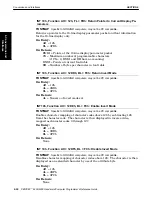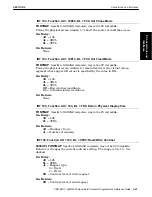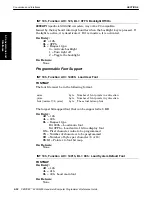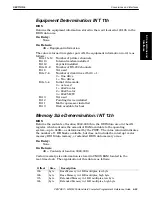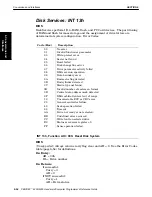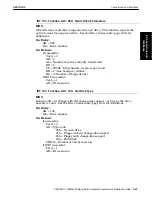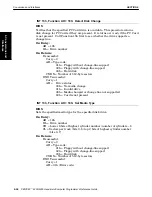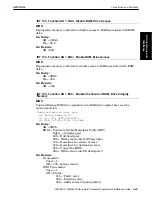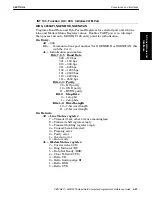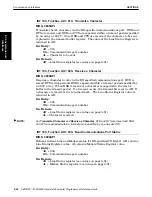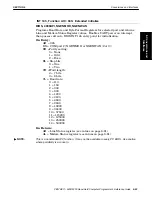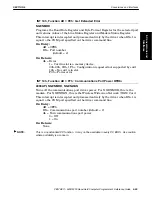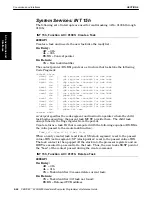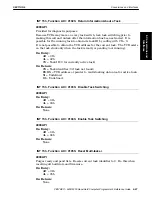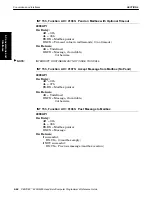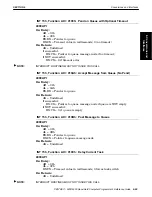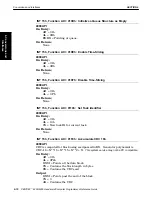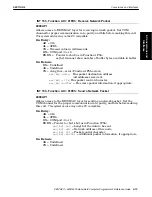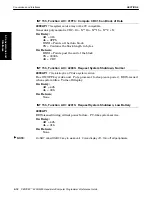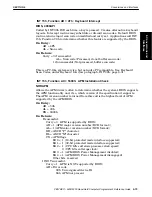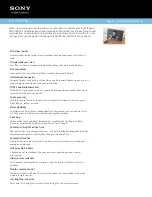
SECTION 6
Conversions and Interfaces
6-60 PEN*KEY
R
6200/6300 Hand-Held Computer Programmer’s Reference Guide
Serial Communications Services: INT 14h
BIOS
The transmit and receive functions use a timeout value from a table at location
40:7C. The default timeout value is 1," which represents about one second.
You can set baud rates beyond those available on a PC, using the Extended
Initialize function. However, since these functions are polled (not
interruptĆdriven), the faster baud rates are of little use.
4000API
Software INT 14h is embedded into 4000API.EXE and allows access to the 4000
Series style serial communications channels. Three logical ports are mapped
onto two physical ports. Ports 0 and 2 see the RS 232 ports. Port 2 acts like port
0 except that the modem control signals (RTS and CTS) are ignored. For
example, Function 01h sends the character regardless of the state of those
signals. Port 0 can be made to act like port 2 with Function 05h.
A major enhancement provided by these communication is the ability to ignore
modem control signals when sending and receiving characters. This is a nonĆPC
standard, but allows the use of cables that do not have DTR/DSR and RTS/CTS
loopĆbacks or 3ĆwireĆonly devices (TXD, RXD, and ground). This feature is
programmable via the extended port control function.
Port 1 refers to RSĆ485 ports that do not use modem control signals. Reading
Port 1 signals will indicate active."
To extend battery life, shut off communications port power when the port is not
in use. The power is turned on whenever you access a port. You must explicitly
turn off the power with Function FFh.
Transmit and receive functions use a timeout value from a table at location
40:7C. The default timeout is 1, which represents about 1 second.
The Extended Initialize function sets baud rates beyond those available on a PC.
Since these functions are polled (not interruptĆdriven), the faster baud rates are
of little utility, unless interruptĆdriven functions are used in place of the BIOS
functions to send and receive a character.
One difference between the 4000 Series units and 6000 Series computers is
UART capability. The 6000 Series computer uses PCĆcompatible UARTs. The
4000 Series does not use the 8250 UARTs of a PCĆcompatible. These conditions
do not exist in 6000 Series computers.
Portability of code may be affected, where these bits are incorrectly masked and
tested; modifications to existing 4000 Series code may be required for proper
functioning. Not all status bit values of the PC's UART are supported.
"
Break conditions are not generated or detected.
"
Sticky parity is not supported.
"
Transmit shift register empty and break detect signals are not available.
"
Transmit shift register empty and transmit holding register bits are both
set when the UART is ready.
"
The carrier detect, ring indicator, delta carrier detect, trailingĆedge ring
indicator, delta data set ready, and delta clearĆtoĆsend signals are not
available.
6. Conversions and
Interfaces

